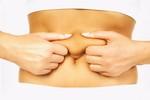
Fat and the Athlete
Most athletes assume the less fat they carry the better. This is largely true for the multisporter.
Every extra kilo you have to carry up the hill, on the bike or carry as you run is a handicap and a burden. Indeed in the assessment of body fat, distance runners and cyclists have some of the lowest percentage of all sports and multisporters are also likely to be very low.
Ideally multisporters should have a fat percentage at the low end of the healthy range. If they have too low of a fat percentage however, it likely indicates they are not eating enough calories to maintain their training and allow muscle growth.
Rapid weight loss of more than .5 to 1kg per week would also mean effective training would be difficult as muscle will be lost along with fat and there may be inadequate energy for training needs.
Planning an ideal target weight or ideal fat percentage requires an estimation of this figure and calculation of the needed loss. Here some problems arise. Fat percentage is notoriously difficult to assess. BMI (body mass index) figures are very inaccurate especially in athletes or powerfully built individuals. Other methods of fat percentage estimation, like underwater buoyancy are complicated and still unreliable as bone density and varying amounts of air trapped in lungs can make a big difference to buoyancy and fat percentage estimation.
Skin fold caliper tests are reasonably accurate but results can vary between testers and must be done over many sites for accuracy. Skin fold tests also make no attempt to measure internal fat. Methods using MRI scanners are probably the most accurate but are way beyond all but academic research as are very expensive and time consuming.
At Gloucester Sports Clinic we have been using B.I.A (Bioelectrical Impendence Assessment) for many years, a simple method of calculating fat percentage that is gradually gaining acceptance. This method uses a formula taking sex, height, weight, age and athleticism into account by referring to internal charts. This figure is then adjusted by the B.I.A. factor. As you stand on the scales a small electrical current is run up one leg and down the other and the resistance is a measure of fat content. Fat is more resistant to an electric current than muscle so allows a direct measure of an individuals fat percentage, at least in the lower half of their body. Early units had limited data and did not allow for athletes so although they gave very consistent readings they tended to be high compared with other methods of fat estimation.
More modern machines have a bigger, more accurate pool of data to choose from and allow for athleticism to some degree. These machines are not expensive and many manufactures are making them but the TANITA Company has the longest history and the best quality machines.
They still give slightly higher readings than skin fold thickness with an ideal for a male endurance athlete being 9-12% and for a female 20-22%. The B.I.A. system does give excellent reliability with very consistent reproducible results, in both weight loss and gain. If for example and athlete weights 100kg and is 20% fat and aims to be 10% fat, he needs to lose 10% or 10kg exactly. This sort of simple calculation is not always that accurate. It applies only if the weight loss is from calorie restriction only.
If the athlete had hit the weights room, or done lots of power or sprint work then he/she may gain significant muscle mass so weight loss may not be so great but the fat percentage loss may be the same.
The serious athlete should consider having access to a machine or get their own, as the tests need to be done at the same time of day and in the same state i.e. before breakfast and with an empty bladder.
Everyone is different and over time the athlete may find he/she performs better at 12% rather than 9%.
Some machines can also estimate upper body fat percentage also, by running a current from hand to hand but the data for upper body fat is far less extensive thus the result is less accurate.
Neil Averis is a doctor at Gloucester Sports Clinic and Multisport enthusiast. He has completed the Coast to Coast five times and is an Ironman finisher.
